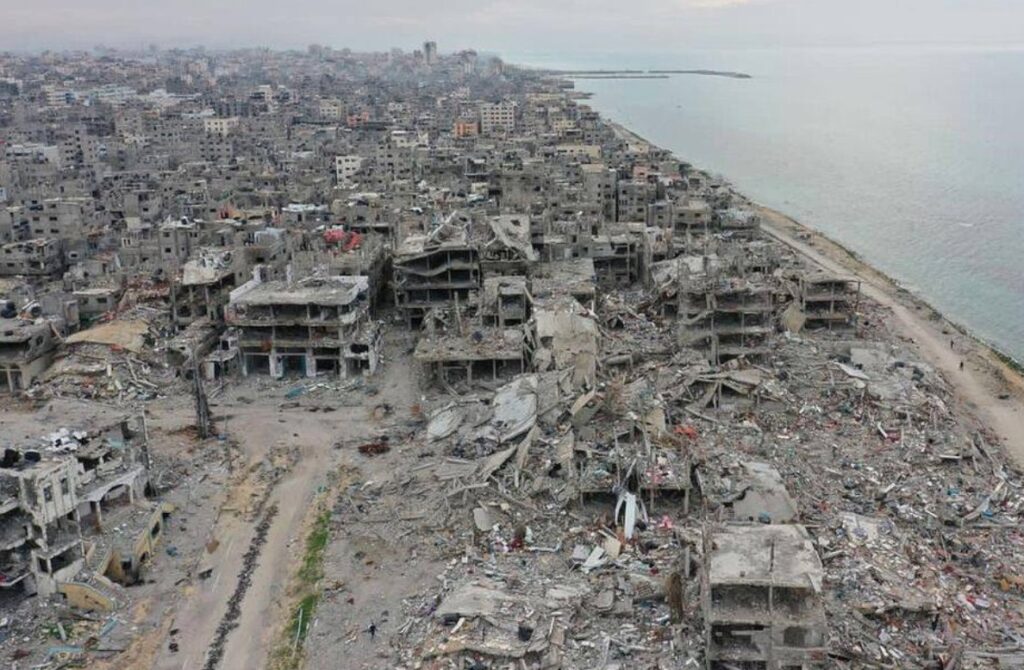Restoring stability in Gaza in a post-Hamas future will be the best deterrence to those who see Hamas down but not out, or who believe that terrorists can outlast the Jewish state.
By Gregg Roman, Middle East Forum
On October 7, 2023, Hamas shattered Israel’s illusion of security. In a single day, the terrorist group killed 1,200 Israelis and took more than 200 hostages, exposing critical vulnerabilities in Israel’s defense.
Now, Israel faces an existential struggle on multiple fronts: Hamas in Gaza, Hezbollah in Lebanon, Iran’s nuclear ambitions, Houthi missiles from Yemen, and resurging violence in Judea and Samaria.
Defeating these interlinked threats will be a challenge, but it is possible.
For fifteen years, Israel pursued a “mowing the lawn” strategy in Gaza. Operations like Cast Lead (2009), Pillar of Defense (2012), Protective Edge (2014), and Guardian of the Walls (2021) followed a cycle: strike Hamas, declare victory, allow reconstruction.
Each time, Israel claimed to have reestablished deterrence. The Hamas attack on October 7, 2023, proved this to be wishful thinking.
The aftermath of these operations saw billions of dollars flow into Gaza for reconstruction. Lack of oversight allowed Hamas to exploit this aid.
Projects like the World Bank’s water reclamation efforts and attempts to establish new neighborhoods throughout the coastal envelope provided cover for Hamas to divert resources to military purposes.
Hamas built an extensive tunnel network and amassed an arsenal of rockets under schools and hospitals.
To break the cycle of repetitive conflict, Israel shifts toward new, more aggressive strategies. Israeli forces now target and kill key Hamas figures wherever they are.
These decapitation operations create leadership vacuums, severely impairing Hamas’s ability to coordinate large-scale operations or pose an immediate existential threat.
Alongside these targeted strikes, Israel has advanced its efforts to destroy Hamas’s tunnel networks that once reached more than 300 miles.
By using ground-penetrating radar, seismic sensors, and advanced robotic systems, Israel destroyed many of these, handicapping Hamas operations.
Still, dangers loom. The 2011 trade of 1,000 Palestinian prisoners to free Israeli soldier Gilad Shalit convinced Hamas that it could make extravagant demands and looms over efforts to free the approximately 100 hostages Hamas still holds.
The absence of a centralized authority in Gaza could also lead to instability with smaller factions vying for power.
Israel must establish a demilitarized buffer zone along the Gaza border, monitored by Sunni Arab forces like Egypt, Jordan, and Saudi Arabia. Reconstruction efforts require strict regulation through a joint task force of Israeli and non-U.N.-appointed international experts.
A Marshall Plan-style economic program, contingent on demilitarization, should develop industrial zones near the Egyptian border. Education reform must remove antisemitic content and promote coexistence, partnering with moderate Arab states.
Regional security cooperation should enhance intelligence sharing and prevent weapons smuggling, using joint Israeli-Arab naval patrols in the Red Sea and Gulf of Aden.
To combat radicalization, Israel and partners must implement civic education in Gaza schools and establish youth centers offering alternatives to militant recruitment.
A public awareness campaign and religious education program led by moderate imams will counter extremist narratives. Here, Morocco’s Mourchidat program demonstrates success.
Economic incentives for families participating in de-radicalization programs and rehabilitation for former Hamas members will aid societal healing.
An American-led task force spanning departments, i.e., not solely under the thumb of the State Department, should monitor these programs’ effectiveness by looking at recidivism rates as the United Nations has proven itself unreliable.
It is possible to break the cycle of violence in Gaza. U.N. and European officials may talk the talk, but it is crucial that those who have skin in the game, namely Israel and its Sunni Arab allies, take the lead to implement programs that contain radicalism and fill the vacuum that religious extremists seek to fill.
If security, if not peace, is to triumph, the region no longer can prioritize diplomatic nicety over reality. Counter-extremism must triumph over virtue signaling, and both the U.N. and State Department must take a backseat to technical experts disinclined to easy compromise.
To restore stability in Gaza in a post-Hamas future will be the best deterrence to those who see Hamas down but not out, or who believe that terrorists can outlast the Jewish state.


